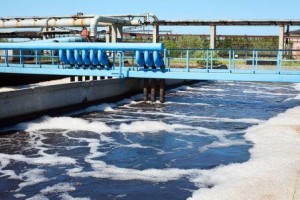Odor control at wastewater treatment facilities is taken seriously at any treatment facility, and Sage Thermal Mass Flow Meters play an important role in the operation of these systems.
Odor Control at Wastewater Treatment Plants

Odors emitted from a wastewater treatment plant naturally occur due to the anaerobic treatment of the sewage waste. The most common odor is caused by hydrogen sulfide, although other chemicals in smaller concentrations are also present. These odor-causing chemicals have very low detection thresholds, in the parts per billion range. Odors are emitted at multiple points in the wastewater treatment process.
When a wastewater treatment plant is located near urban and residential areas, odor control systems are often employed. Various methods of odor control processes can be utilized.
Wet Scrubber Treatment
To ensure complete capture of all odors, wastewater treatment facilities will put covers over the various sources where odor can be emitted; this includes such areas as the holding tanks, aeration basins, clarifiers, and sludge thickeners. The collected odorous air is then treated in various methods with the most common being wet scrubbers or activated carbon adsorbers. Sage Prime or Paramount insertion flow meters can make sure that the correct amount of air is being drawn from various sources. Also, since multiple scrubbers or adsorbers are used, insertion thermal flow meters can be used to balance the flow into the various units.
Odor Neutralization
Various chemicals can be used to neutralize any odors. These chemicals can be vaporized into an air stream to disperse into the desired location. Thermal flowmeters are important in ensuring that the proper amount of air is being used and that the airflow is evenly divided if there are multiple injection points.

